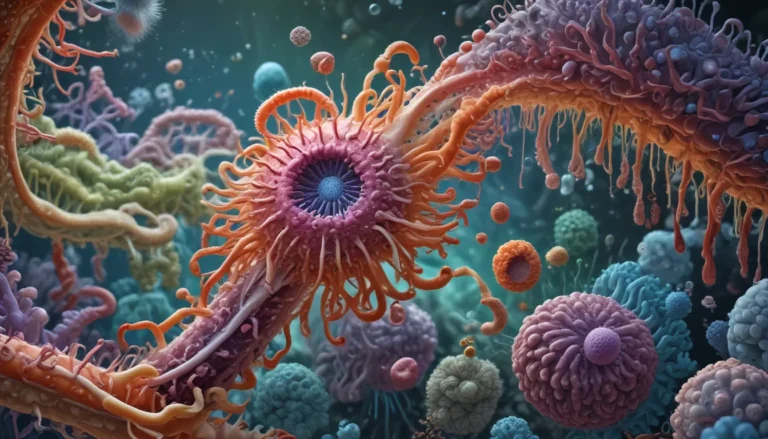A Note About Images: The images used in our articles are for illustration purposes only and may not exactly match the content. They are meant to engage readers, but the text should be relied upon for accurate information.
Photorespiration is a vital process in plants that aids in their survival amidst changing environmental conditions. Despite being seen as counterproductive, this phenomenon has captivated researchers for decades. In this article, we will delve into 18 captivating facts about photorespiration, shedding light on its significance, mechanisms, and implications for plant biology. Let’s embark on a journey to uncover the fascinating world of photorespiration!
Unveiling the Origins of Photorespiration:
-
Historical Discovery: Photorespiration was first discovered in the 1950s during studies on photosynthesis. Scientists observed a side reaction that consumed oxygen, leading to the identification of this intriguing process.
-
Cellular Location: Photorespiration takes place within the chloroplasts of plant cells. Specialized structures called peroxisomes within the chloroplasts initiate the photorespiration pathway.
The Role of Photorespiration in Plant Physiology:
-
Temperature Regulation: During high temperatures, photorespiration acts as a protective mechanism, preventing damage to plant cells by maintaining a balance in their cellular components.
-
Carbon Dioxide Release: An essential outcome of photorespiration is the release of carbon dioxide, which is recycled and utilized by other metabolic pathways within the plant.
-
Energy Consumption: Unlike photosynthesis, which generates energy-rich molecules, photorespiration consumes energy. This results in a net loss of energy for the plant.
Implications of Photorespiration on Crop Yield:
-
Impact on Crop Yield: In some agricultural crops, up to 30% of total energy consumption can be attributed to photorespiration, leading to reduced productivity.
-
Genetic Variability: C3 plants, which form the majority of plant species, are more susceptible to photorespiration compared to C4 plants, which have evolved specialized mechanisms to minimize its occurrence.
Environmental Influences on Photorespiration:
-
Light Intensity: Higher light intensities can accelerate photorespiration, leading to increased energy loss and reduced efficiency of photosynthesis.
-
Carbon Dioxide Levels: Depletion of carbon dioxide levels, such as during drought conditions, can enhance the prevalence of photorespiration, impacting plant growth and survival.
Evolutionary Significance of Photorespiration:
-
Evolutionary Preservance: Despite its energy-consuming nature, photorespiration has been retained throughout evolution due to its critical role in maintaining cellular homeostasis and adapting to environmental changes.
-
Link to Nitrogen Metabolism: The release of nitrogen compounds during photorespiration is essential for plant growth and the synthesis of vital biomolecules.
Exploring Strategies to Manipulate Photorespiration:
-
Genetic Engineering: Scientists are investigating ways to enhance photosynthetic efficiency by modifying the photorespiration pathway in crop plants through genetic engineering techniques.
-
Potential Impacts of Rising CO2 Levels: The increasing concentrations of carbon dioxide in the atmosphere may have implications for the occurrence and intensity of photorespiration in the future.
Interconnectedness with Earth’s Carbon and Oxygen Cycles:
-
Carbon and Oxygen Exchange: The interplay between photosynthesis, respiration, and photorespiration plays a crucial role in maintaining the balance of carbon dioxide and oxygen in the Earth’s atmosphere.
-
Role in Climate Resilience: Understanding photorespiration can lead to improved agricultural practices, development of climate-resilient crops, and ensuring food security in a changing world.
Unlocking the Potential of Plant Biology:
-
Plant Species Variability: Different plant species exhibit varying levels of photorespiration, influenced by environmental factors such as temperature, light intensity, and carbon dioxide availability.
-
Potential for Innovation: By deepening our understanding of photorespiration, we can optimize crop productivity, develop resilient crops, and contribute to global food security.
Continuing the Journey of Discovery:
- Research and Exploration: Photorespiration remains a complex topic that requires ongoing research and exploration to unveil new insights into plant biology and metabolic pathways.
In conclusion, photorespiration is a captivating process with profound implications for plant physiology and agricultural productivity. By unraveling its mysteries, we pave the way for innovative solutions to enhance crop resilience and ensure food security in a dynamic environment. Let’s continue our quest for knowledge and embrace the wonders of plant biology.
FAQs
Q: What is photorespiration?
A: Photorespiration is a metabolic process in plants that involves the conversion of oxygen and RuBP in the presence of light, leading to the release of carbon dioxide.
Q: Why is photorespiration important?
A: Photorespiration plays a crucial role in removing toxic molecules, protecting plants from excessive carbon dioxide build-up, and ensuring efficient photosynthetic function.
Q: Can photorespiration be reduced?
A: Scientists are actively exploring ways to minimize the negative effects of photorespiration through genetic engineering and breeding techniques to enhance plant resilience and productivity.
As we journey through the intricate realm of plant biology, let’s embrace the wonders of photorespiration and its profound impacts on agricultural sustainability and environmental resilience. Join us in continuing to explore the captivating world of plant metabolism and unlock the secrets of nature’s intricate balance.






